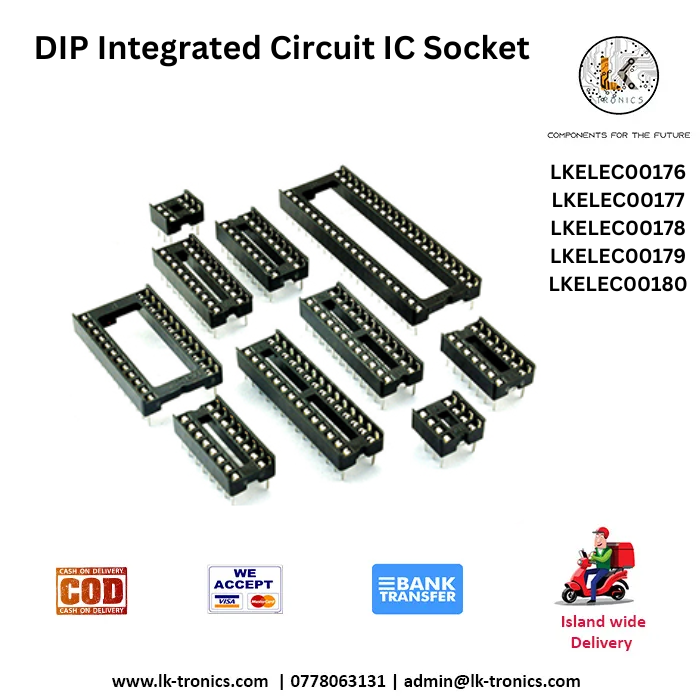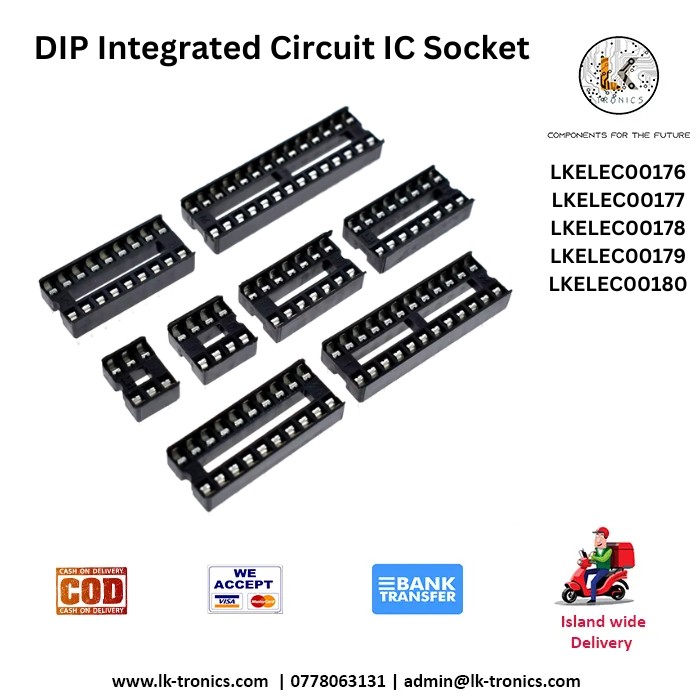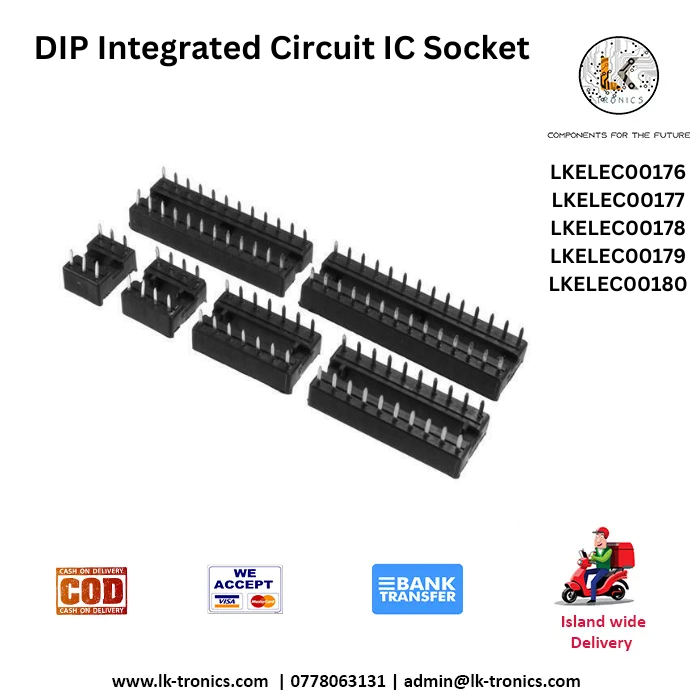Electronics accessories
DIP Integrated Circuit IC Socket
Availability:
In stock
LKELEC00176| LKELEC00177 | LKELEC00178 | LKELEC00179 | LKELEC00180
Rs 10.00 – Rs 32.00
CompareDIP Integrated Circuit IC Socket
The DIP Integrated Circuit IC Socket provides a reliable connection for DIP package components, making it easier to replace and protect ICs in your projects. This socket ensures a secure and durable connection, ideal for prototyping and circuit assembly.
Specifications
1. Pin Count:
- Range: Typically available in pin counts, including 6, 8, 14, 16, 18, 20, 24, 28, 32, 40, 48, and 64 pins.
- Selection: The pin count should match the IC being used.
2. Contact Type:
- Material: Commonly made from phosphor bronze, beryllium copper, or tin-plated steel.
- Plating: Gold or tin plating is often used to improve conductivity and corrosion resistance.
3. Pitch (Pin Spacing):
- Standard: 2.54 mm (0.1 inches) between the center of each pin.
- Width: The width between rows of pins is typically 7.62 mm (0.3 inches) for narrow sockets and 15.24 mm (0.6 inches) for wide sockets.
4. Mounting Style:
- Through-Hole: DIP IC sockets are usually through-hole mounted, meaning the pins pass through the PCB for soldering.
- Solder Tail Length: Varies, but commonly ranges from 3 mm to 4 mm.
5. Profile:
- Low-Profile: Designed to minimize height above the PCB. Typically, low-profile sockets have a height of about 2.54 mm (0.1 inches).
- Standard Profile: Generally taller, with a height of around 3.56 mm to 5 mm.
6. Insulator Material:
- Material: Most sockets are made from thermoplastic or thermosetting polymers like polyester, PPS (polyphenylene sulfide), or PBT (polybutylene terephthalate).
- Temperature Rating: Most materials typically operate between -55°C to 125°C.
7. Operating Voltage:
- Rating: Varies based on the material and pin configuration, but commonly around 100-500V.
- Dielectric Strength: Typically around 1000V AC for 1 minute.
8. Current Rating:
- Typical: Ranges from 1 A to 3 A per pin, depending on socket design and materials.
9. Insertion and Extraction Force:
- Insertion Force: The force required to insert an IC into the socket ranges from 1 to 3 N per contact.
- Extraction Force: The force needed to remove an IC from the socket is typically 0.5 to 2 N per contact.
10. Contact Resistance:
- Standard: Generally less than 20 mΩ, depending on the contact material.
11. Durability (Mating Cycles):
- Typical: Around 10-50 mating cycles, though some high-end models can withstand up to 200 cycles.
VISIT OUR FACEBOOK PAGE FOR MORE INFO | MORE PRODUCT IN OUR SHOP
| Type | DIP-6P, DIP-16P, DIP-18P, DIP-20P, DIP-24P |
|---|
Based on 0 reviews
Be the first to review “DIP Integrated Circuit IC Socket”
You must be logged in to post a review.












There are no reviews yet.